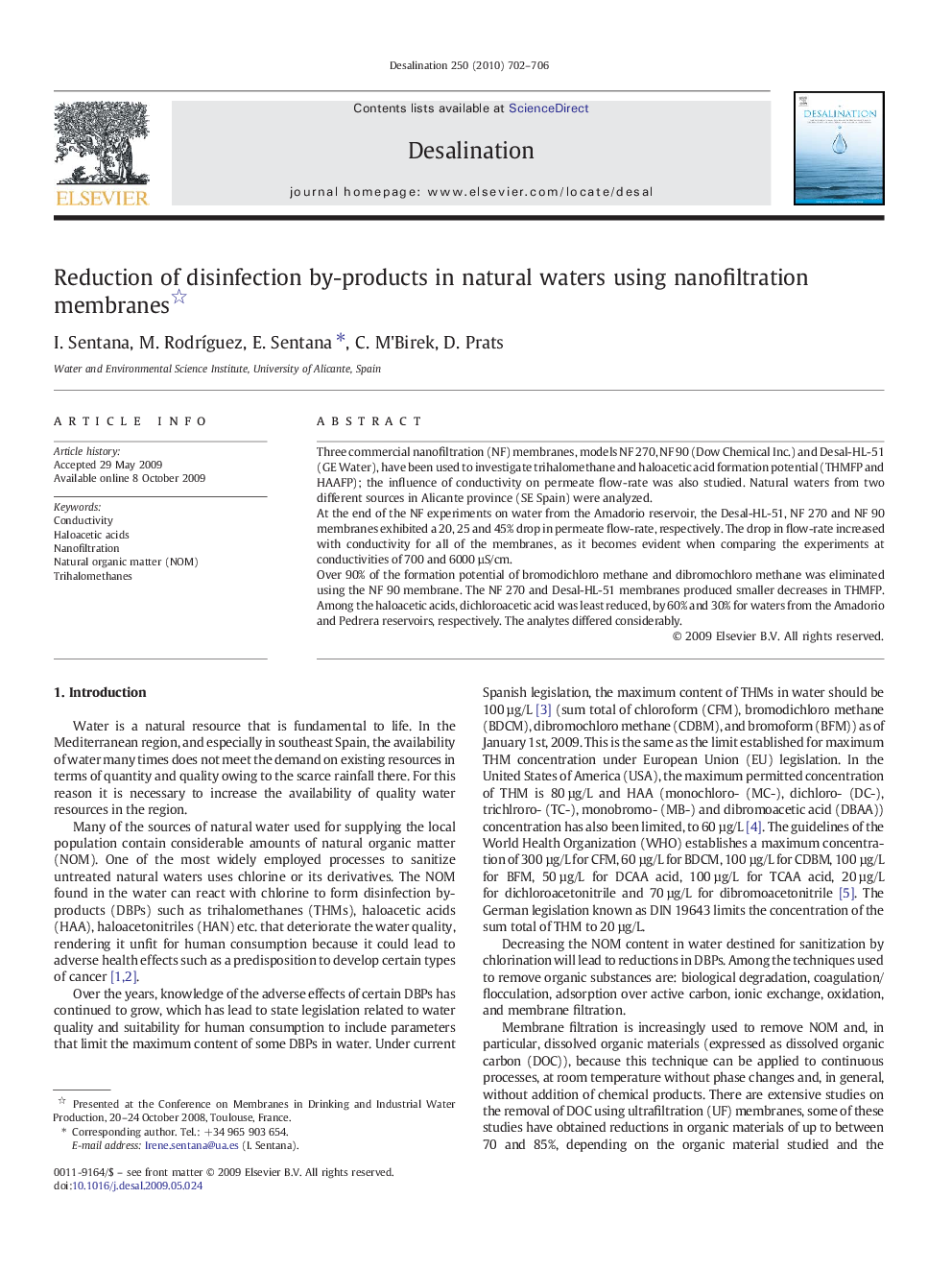| Article ID | Journal | Published Year | Pages | File Type |
|---|---|---|---|---|
| 626075 | Desalination | 2010 | 5 Pages |
Three commercial nanofiltration (NF) membranes, models NF 270, NF 90 (Dow Chemical Inc.) and Desal-HL-51 (GE Water), have been used to investigate trihalomethane and haloacetic acid formation potential (THMFP and HAAFP); the influence of conductivity on permeate flow-rate was also studied. Natural waters from two different sources in Alicante province (SE Spain) were analyzed.At the end of the NF experiments on water from the Amadorio reservoir, the Desal-HL-51, NF 270 and NF 90 membranes exhibited a 20, 25 and 45% drop in permeate flow-rate, respectively. The drop in flow-rate increased with conductivity for all of the membranes, as it becomes evident when comparing the experiments at conductivities of 700 and 6000 µS/cm.Over 90% of the formation potential of bromodichloro methane and dibromochloro methane was eliminated using the NF 90 membrane. The NF 270 and Desal-HL-51 membranes produced smaller decreases in THMFP. Among the haloacetic acids, dichloroacetic acid was least reduced, by 60% and 30% for waters from the Amadorio and Pedrera reservoirs, respectively. The analytes differed considerably.
